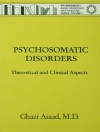There have been greater advances in our knowledge of the visual function and its disabilities in the past 50 years than had accumulated in all of the previous years. This applies not only to the basic science of biochemistry, physiology, physiopathology, and cytopathology but also to the diagnosis and treatment of visual dysfunction and ocular disease. These advances have been aided by a proliferation of ingenious instruments. When I began my residency in ophthalmology at The Wilmer Institute in 1938, one was supposed to learn not only the physiology of vision but also how to diagnose and treat all phases of ophthalmology including disabilities of the orbit, sclera, retina, lens, and cornea. In addition he or she was supposed to understand neuro-ophthalmology, ophthalmic genetics, and so-called uveitis. It soon became evident that no one could adequately comprehend all of these areas and, therefore, most young trainees today take a year or two of fel- lowship in a specialized area following their three-to five-year residency train- ing. Following this they join a group of other ophthalmologists and specialize. Thus, they become more expert in the diagnosis and treatment in a limited area in ophthalmology. When I returned to The Wilmer Institute in 1955 as Head of the Department I was the only full-time member of the staff. To date we have some 28 full-time ophthalmologists working in highly specialized areas of our institution.
David Miller & Daniel J. Nadler
Glare and Contrast Sensitivity for Clinicians [PDF ebook]
Glare and Contrast Sensitivity for Clinicians [PDF ebook]
Koop dit e-boek en ontvang er nog 1 GRATIS!
Taal Engels ● Formaat PDF ● ISBN 9781461232421 ● Editor David Miller & Daniel J. Nadler ● Uitgeverij Springer New York ● Gepubliceerd 2012 ● Downloadbare 3 keer ● Valuta EUR ● ID 4598862 ● Kopieerbeveiliging Adobe DRM
Vereist een DRM-compatibele e-boeklezer












